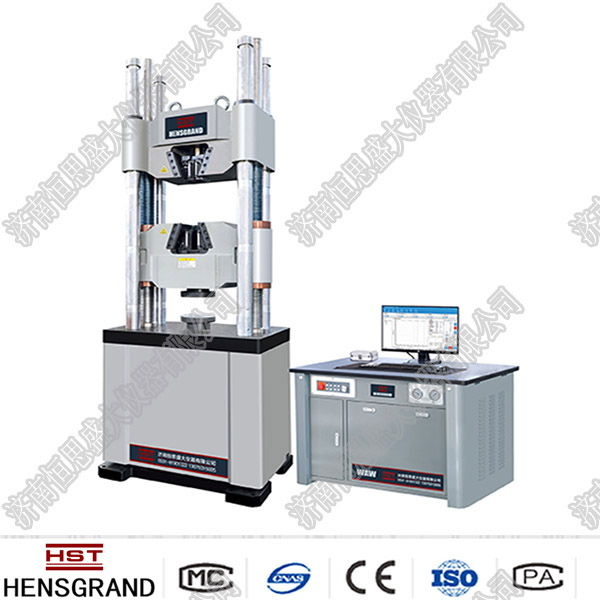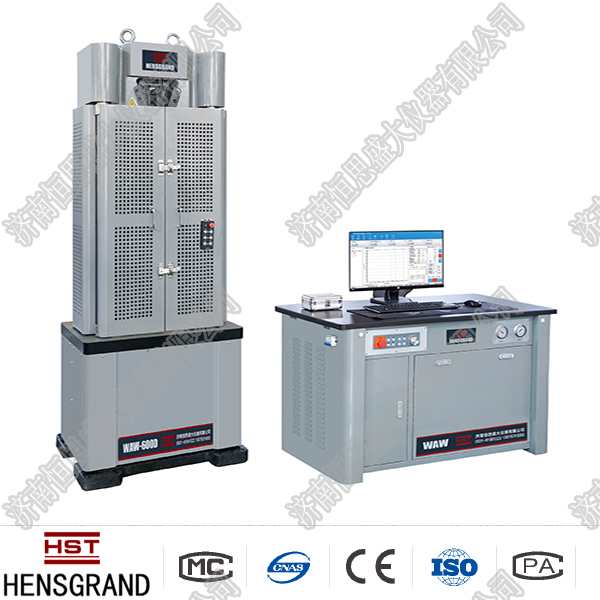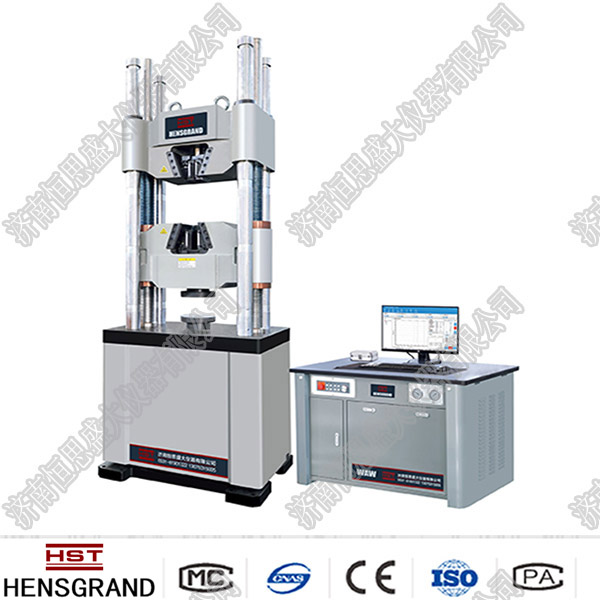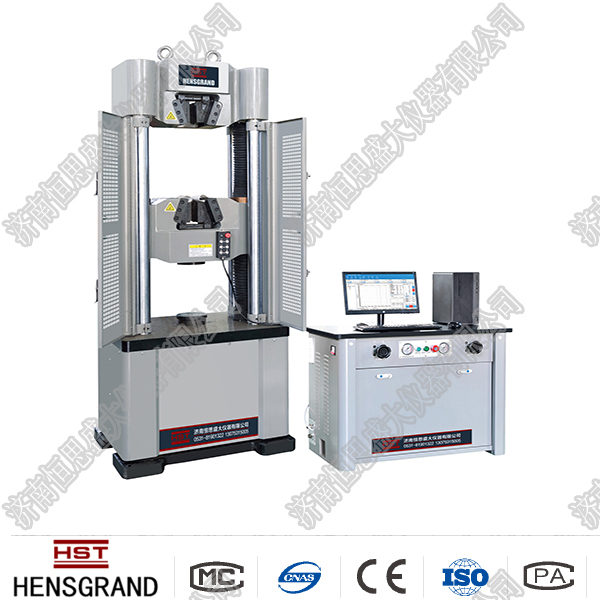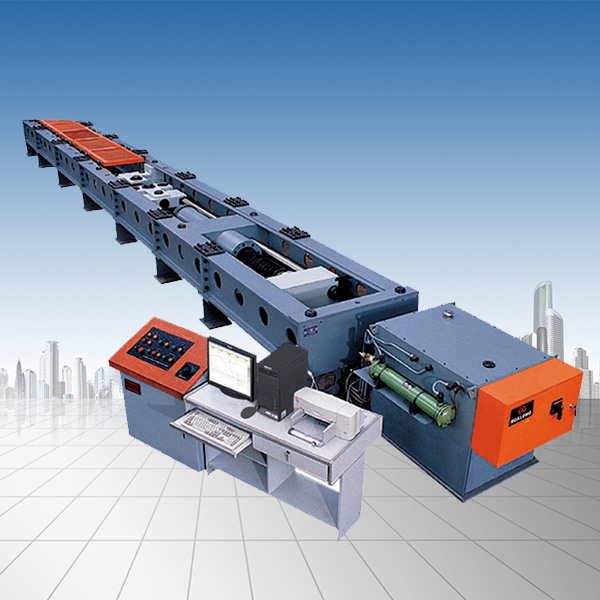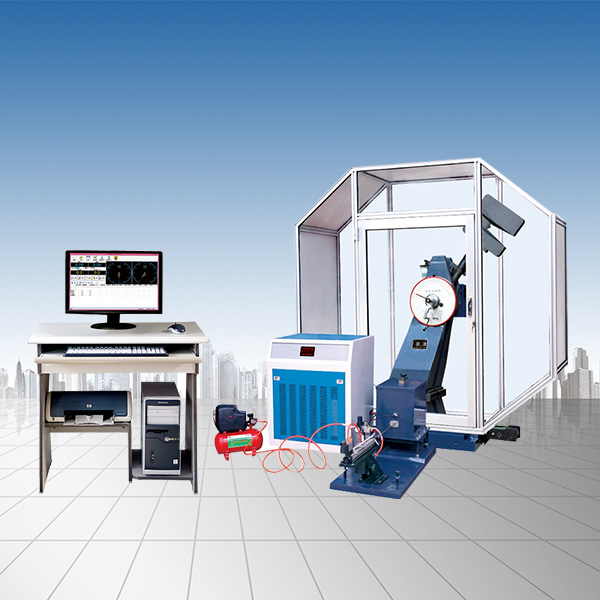Company News
Electronic tensile testing machine selection
Release time:2018-11-23 source:Jinan Hengsi Shanda Instrument Co., Ltd. Browse:
The need to test the tension range of the material should be considered first.
The difference in tension range determines the use ofsensorThe difference determinesTension machinebut this item has little impact on price (except for the gantry). For general flexible packaging manufacturers, the tension range of 1,000 kg is enough. Therefore, it is also decided to use a single-arm type.
The corresponding structure to the single-arm type is a gate-type structure, which adapts to relatively large tension, such as one ton or more. Therefore, flexible packaging manufacturers are basically not available.
Problems with test itinerary.
According to the performance and requirements of the flexible packaging film, the stroke is 600-800mm. If the material elongation exceeds 1000%, the stroke can be 1000 or 1200mm.
Standard configuration issues.
Three basic configurations of intelligence: host, microcomputer, and printer. If the microcomputer has strong functions, you can print directly. In addition, it can also be equipped with a normal computer. With a computer, complex data analysis can be carried out, such as data editing, local amplification, and the report format can be adjusted, and statistical analysis of group styles can be carried out.
Output result.
The output results of the test results can be set arbitrarily: force value, elongation, tensile strength, constant elongation, fixed elongation value, yield strength, elastic modulus, and test force. This can be said to be a comprehensive result of the output when the microcomputer is operated.
On experimental projects.
Flexible packaging requires that one tension machine is used for multiple purposes, that is, on the basis of equipped with different fixtures, tensile, compression, bending, tearing, shear, 180-degree peeling, and 90-degree peeling tests can be performed.
In addition to the above items, some tensile machines on the market can also test the friction coefficient because of their high sensor accuracy (some reach one in 200,000).
Main configuration of product machinery:
The transmission has lead screw transmission and rack transmission. The former is expensive, used for high accuracy and has high repeatability for tests; the latter is cheap, used for low accuracy and has low repeatability for tests.
The lead screw has a decisive effect on the measurement of tension accuracy. Generally, there are ball screws, trapezoidal screws, and general screws. Among them, the accuracy of the ball screw, but its performance can only be achieved by operating the computer servo system, and the whole set is also relatively expensive. The accuracy required by the flexible packaging can be achieved by using general lead screws and trapezoidal lead screws, that is, 0.5-1% accuracy
Drive, with geared and chain drive, the former is expensive for high precision; the latter is cheap for low precision.
The main cost of sensors lies in their lifetime. Photoelectric induction is the most advanced technology, which is generally available for more than 100,000 times. However, the sensors used by Shanghai Xinrenda Instrument Co., Ltd. are from the United States, with high accuracy and generally available for more than 150,000 times.
Test speed.
Some of the market equipment are 10~500 mm/min, and some are 0.01~500 mm/min. The former generally uses ordinary speed control systems, which are low in cost and rough affects accuracy; the latter uses servo systems, which are expensive and have high accuracy. For flexible packaging companies, if you choose a servo system, the speed control range of 1~500 mm/min is enough, which does not affect the accuracy, and the price is within a reasonable range.
Measurement accuracy. Accuracy issues, including force measurement accuracy, speed accuracy, deformation accuracy, and displacement accuracy. These accuracy values can reach plus or minus 0.5. But for ordinary manufacturers, achieving 1% accuracy is enough. In addition, the force value resolution can almost reach one in 200,000.
Recommended productsPRODUCTS


















